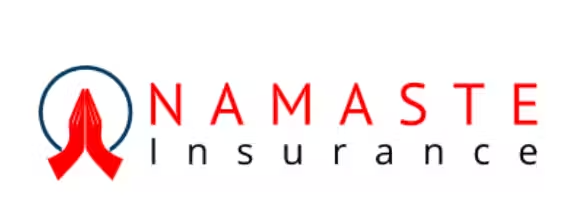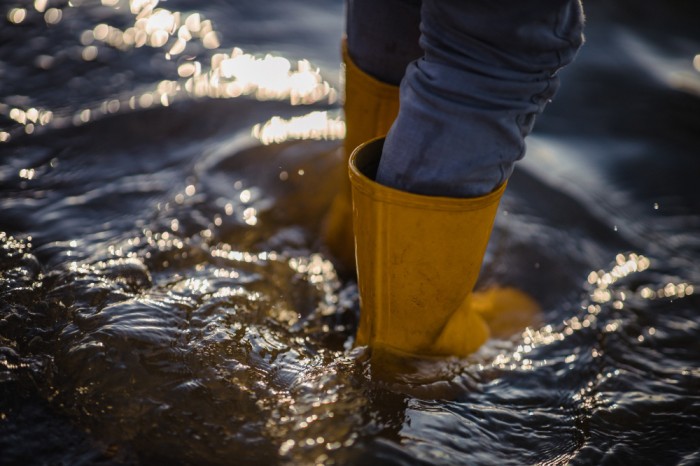Do you reside in a flood zone and have thought about buying flood insurance, but just never got around to it? You’re not alone. According to research, 6 in 10 homes nestled in high-risk flood areas are uninsured. This startling statistic demonstrates how poorly prepared many homeowners are to deal with natural disasters.
More often than not, these property owners are willing to get insurance, but then, they are bamboozled with ambiguous policies and real estate rules. The vast majority do not have access to complete floodplain maps that would allow them to assess their flood risk.
However, one thing is certain, if you are willing to invest some time in understanding the policy, then this guide is worth your while.
What is Flood Insurance?
Flood insurance covers damages caused to a property from the impact of water, either due to heavy storms or any kind of overflow. For example, if the sewerage system in your local neighbourhood fails due to a storm surge, the wastewater in the lines could flow through the toilets, sinks, and other plumbing fixtures into your home. When this happens, it can damage your property and possessions within.
In such an unfortunate event, your standard homeowner’s coverage won’t protect you — meaning you’ll have to cover the loss and out-of-pocket expenses. However, with a flood insurance policy in place, you can quickly take care of the damage and get back to business as usual.
What Qualifies as Flood Damage?
Some homeowners believe that flood damage and water damages are the same. As a result, they don’t review their home insurance coverage to see if it protects them against flooding. While homeowners insurance covers water damage from faulty plumbing, roof leaks, and overflowing appliances, it doesn’t financially protect property owners from any damages resulting from flood water.
To classify flood damage, the water source must be external, such as rain or melting snow, not from an internal water system, such as a burst pipe. This natural event is prevalent in areas designated as high-risk zones. Thus, you’ll need an elevation certificate (EC), which indicates the elevation of your home and whether you are in a flood-prone area.
It’s possible to tell if your property is situated in such places if you have a flood plain map. Generally, high-risk zones are marked with an A or a V. Areas designated with the former have a 1% annual flood risk. In addition, the chance of flooding during a 30-year mortgage is 26%. These places, however, lack detailed analysis and thus have no base flood elevation (BFE) information.
Despite its similarities to the former, the latter (V) is assigned to the most hazardous flood-prone areas. Other zones are B, C, D, and X.
What If the Damage is Minor?
A flood with minimal cosmetic damage may not warrant a claim, especially if it can be repaired quickly. In any case, you should notify your insurer of the event and arrange for a professional to assess the damage to determine the next line of action. Floodwater may not damage your possessions immediately, but the aftermath can be costly.
For example, a mould infestation can affect the building’s structural integrity and cause serious health problems.
Coverages and Exclusions
Certain restrictions apply to flood insurance, as with other coverages. Nevertheless, your policy covers:
Essential Systems
If your home’s plumbing, electrical, or HVAC (heating, ventilation, and air conditioning) systems are damaged, they may need to be replaced as part of the restoration efforts. The coverage will also include the cost of installing essential systems that meet the standards of local building codes.
Furniture and Clothing
Your suits, dresses, bedframes, sheets, pillows, and shoes, to name a few, are all covered. In the event of flood damage, your insurer will pay to replace such items.
Appliances
The coverage typically covers the cost of repairing or replacing major appliances that have been damaged as a result of the flood. This includes refrigerators, washers, dryers, stoves, air conditioners, and dishwashers.
Permanently Installed Items
The insurance coverage pays for the replacement of damaged cabinets, floors, window blinds, bookcases, wallboards, staircases, detached garages, and other items.
Valuables
Flood insurance covers the financial loss of your destroyed jewellery, antiques, and works of art.
Your insurance coverage, on the other hand, contains exclusions, the majority of which are not related to flooding. These include:
- Property damage from earth movement, even if caused by flooding
- Personal automobiles
- Valuable papers and legal tender notes
- Mould, mildew, and moisture damages that are not flood-related or are avoidable
- Personal belongings located outside the insured structure
- Additional living expenses, such as lodging and relocation costs during renovations
Where to Get Insured
It’s ideal to get coverage from an insurer that has a national presence. Flood insurance is available via FEMA’s National Flood Insurance Program (NFIP). You can also buy this policy from a private insurer. Often, private insurance agents offer the best coverages at lower prices and are flexible enough to offer personalized policies. You will most likely find one that also provides home and renter’s insurance.
As for the federal government, it only sells coverage for floods in federally designated high-risk zones. If your property is located in one of these places, you can obtain an NFIP policy via any credible insurance agent nationwide. Your policy comes with a set of options and exclusions, as discussed earlier.
Expected Fee to Pay
Your location plays a crucial role in determining how much you should pay to protect your home. It is likely that your monthly expenses will be higher if you live in a flood-prone area than if you live outside of it. Expect to spend an average fee of $700 per year. To determine the amount of cover you need, your insurer will assess the level of risk on your structure.
Higher deductibles result in lower premiums, and vice-versa. Under federal policy, you are covered up to $250,000 per structure and $100,000 for its content. Having coverage is a necessity, even if you’ve never experienced flooding or your insurer hasn’t recommended a policy yet.
According to studies, 40% of homeowners who reside outside flood-prone areas file claims after a disaster. Given this statistic, you would do well to err on the side of caution and protect your property.
Conclusion
Regardless of where you reside, it’s best to be prepared for any weather-related mishap, especially flooding. Flood insurance protects you and your property from loss. Hence, it is in your best interest to get insured before disaster strikes.
Disclaimer
The information provided in this blog is for general guidance purpose only and does not qualify as legal advice. For Insurance specific information kindly contact us at (510) 613 4604 or visit our website https://www.thenamasteagency.com/.

